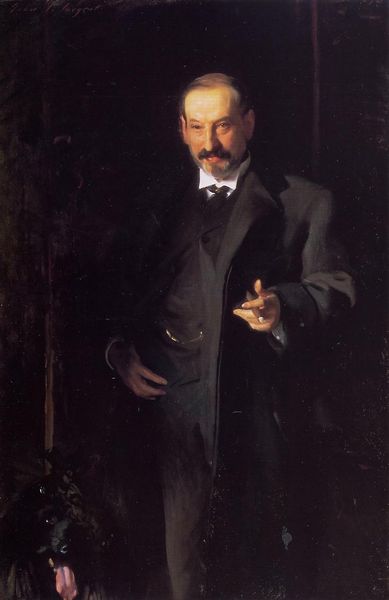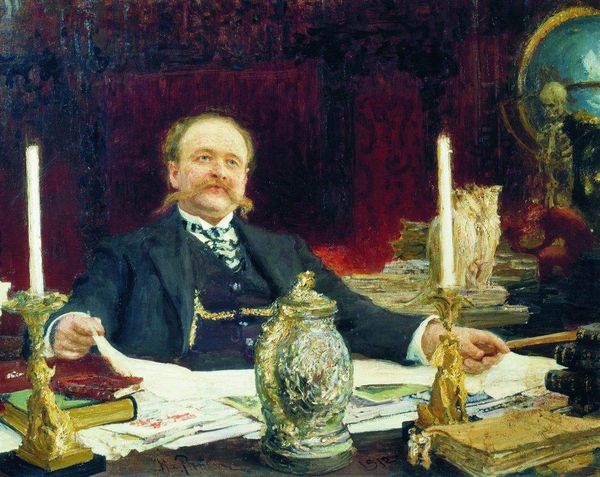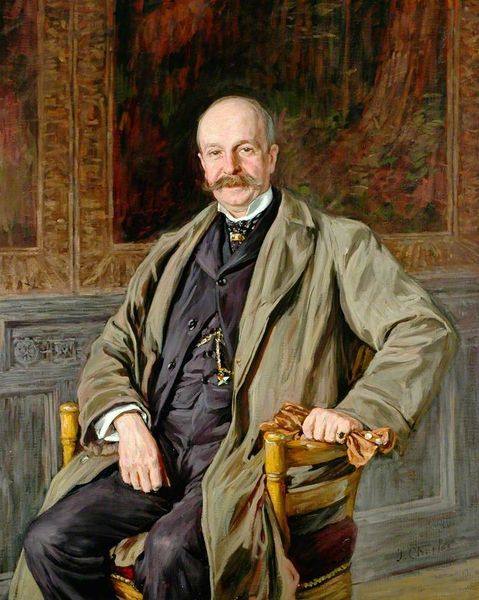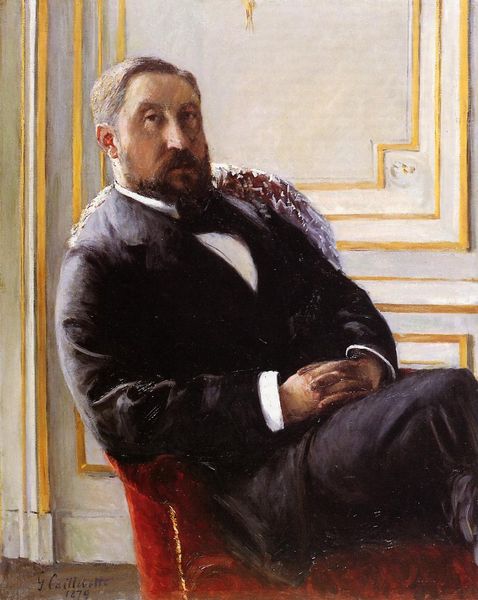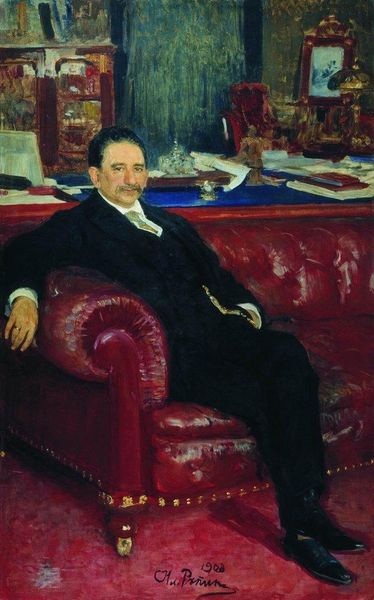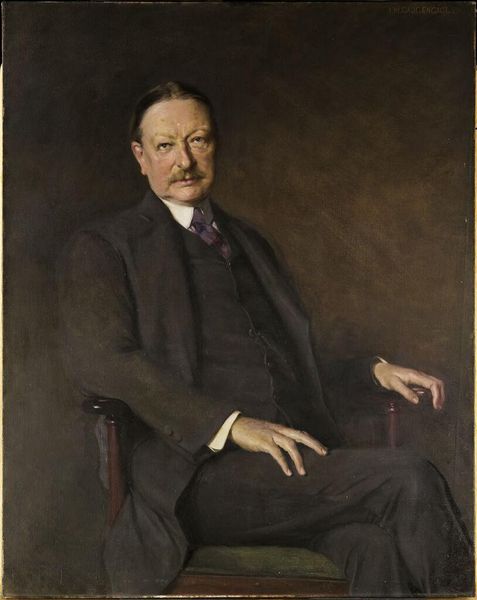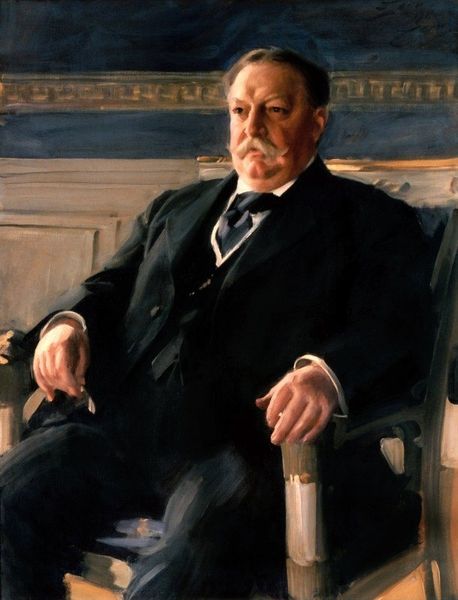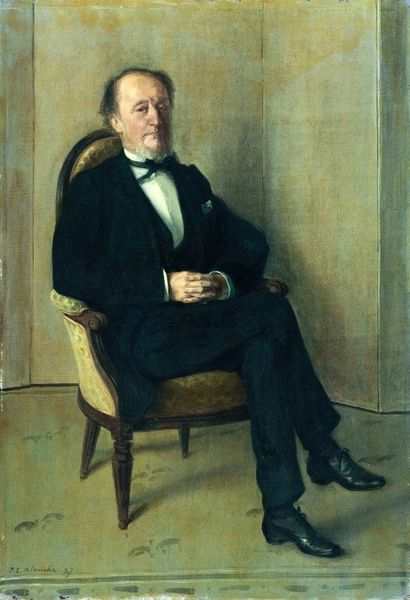
painting, oil-paint
#
portrait
#
portrait
#
painting
#
oil-paint
#
russian-avant-garde
#
realism
Copyright: Public domain
Curator: Isn’t it remarkable how a portrait can hold an entire era within its brushstrokes? We are standing before Boris Kustodiev's 1909 oil painting, "Portrait of P.L. Barc." Editor: Oh, my, he’s practically swimming in velvet. I see opulence draped over opulence—a symphony of materials competing for attention. It practically shouts, “Russia before the revolution." Curator: It's more than surface-level opulence; it's Kustodiev's particular brand of realism mingling with Russian avant-garde elements, wouldn't you say? Notice how the face seems grounded in the physical, almost weighty, yet the gilded clock and the reflective surfaces hint at a world beyond the immediate. He manages to give a glimpse of the inner workings of a man placed on a precipice. Editor: Right, but look closer. Oil paint, canvas, gold leaf, imported dyes for that intense blue – these materials speak of global trade, of skilled labor. Someone mined the metals for that clock, someone wove the fabric of the suit... It is a representation of status produced through layers of extraction and value-added processes. The portrait’s subject seems divorced from the labor it embodies, quite ironic if you think of it. Curator: Perhaps that detachment, that comfortable distance, is precisely the point. Kustodiev isn’t merely capturing a likeness; he's capturing a social stratum teetering on the edge of monumental change. It is an ode to time and to tradition right before that moment became past. Doesn’t the weight in his gaze reflect something of this immanent anxiety? The portrait also feels incredibly humane; in spite of its trappings, I see a soul. Editor: Hmm. For me, the anxiety resonates because all of this is inherently fragile. These resources are finite, these empires temporary. Oil paint degrades; gilded objects tarnish; societal structures crumble and decay under their own contradictions, but also offer the means to something entirely new, something hopefully more sustainable. Curator: True, like every reflection this painting can teach a lot about its historical and material underpinnings but ultimately is a potent, human mirror reflecting how we see ourselves now and our relationship to a complicated and contested past. Editor: I can agree with that. I’ll leave now to ponder on all of those layers.
Comments
No comments
Be the first to comment and join the conversation on the ultimate creative platform.

